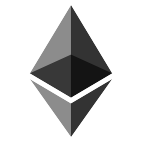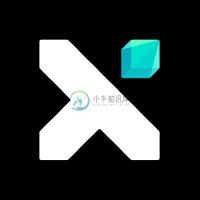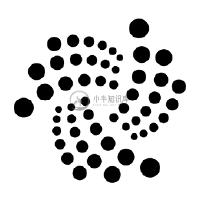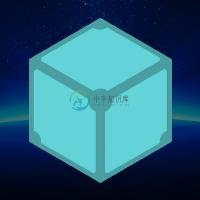Awesome Blockchain
Curated list of resources for the development and applications of block chain.
The blockchain is an incorruptible digital ledger of economic transactions that can be programmed to record not just financial transactions but virtually everything of value (by Don Tapscott).
This is not a simple collection of Internet resources, but verified and organized data ensuring it's really suitable for your learning process and useful for your development and application.
Contents
Click to expand
Frequently Asked Questions (F.A.Q.s) & Answers
Q: What's a Blockchain?
A: A blockchain is a distributed database with a list (that is, chain) of records (that is, blocks) linked and secured bydigital fingerprints (that is, crypto hashes).Example from genesis_block.json:
{
"version": 0,
"height": 1,
"previous_hash": null,
"timestamp": 1550049140488,
"merkle_hash": null,
"generator_publickey": "18941c80a77f2150107cdde99486ba672b5279ddd469eeefed308540fbd46983",
"hash": "d611edb9fd86ee234cdc08d9bf382330d6ccc721cd5e59cf2a01b0a2a8decfff",
"block_signature": "603b61b14348fb7eb087fe3267e28abacadf3932f0e33958fb016ab60f825e3124bfe6c7198d38f8c91b0a3b1f928919190680e44fbe7289a4202039ffbb2109",
"consensus_data": {},
"transactions": []
}
Q: What's a Hash? What's a (One-Way) Crypto(graphic) Hash Digest Checksum?
A: A hash e.g. d611edb9fd86ee234cdc08d9bf382330d6ccc721cd5e59cf2a01b0a2a8decfffis a small digest checksum calculatedwith a one-way crypto(graphic) hash digest checksum functione.g. SHA256 (Secure Hash Algorithm 256 Bits)from the data. Example from crypto.js:
function calc_hash(data) {
return crypto.createHash('sha256').update(data).digest('hex');
}
A blockchain uses
- the block header (e.g.
Version,TimeStamp,Previous Hash...)and - the block data (e.g.
Transaction Data...)
to calculate the new hash digest checksum.
Q: What's a Merkle Tree?
A: A Merkle tree is a hash tree named after Ralph Merkle who patented the concept in 1979(the patent expired in 2002). A hash tree is a generalization of hash lists or hash chains where every leaf node (in the tree) is labelled with a data block and every non-leaf node (in the tree)is labelled with the crypto(graphic) hash of the labels of its child nodes. For more see the Merkle tree Wikipedia Article.
Note: By adding crypto(graphic) hash functions you can "merkelize" any data structure.
Q: What's a Merkelized DAG (Directed Acyclic Graph)?
A: It's a blockchain secured by crypto(graphic) hashes that uses a directed acyclic graph data structure (instead of linear "classic" linked list).
Note: Git uses merkelized dag (directed acyclic graph)s for its blockchains.
Q: Is the Git Repo a Blockchain?
A: Yes, every branch in the git repo is a blockchain.The "classic" Satoshi-blockchain is like a git repo with a single master branch (only).
More Q&A
- Blockchain Interview Questions
- 10 Essential Blockchain Interview Questions
- Top 36 Blockchain Job Interview Questions & Answers
Basic Introduction
- Encryption knowledge
- Basic concepts - Asymmetric encryption, Digital signature, Certificate
- Digital signature extension - Multi-signature, Blind signature, Group signature, Ring signature
- Merkle tree
- Merkle DAG
- CryptoNote v2.0 - Untraceable Transactions and Egalitarian Proof-of-work
- Consensus
- Account and transaction model
- Exchange
- Applications
- Governance
Development Tutorial
BitCoin
Bitcoin is an experimental digital currency that enables instant payments to anyone, anywhere in the world. Bitcoin uses peer-to-peer technology to operate with no central authority: managing transactions and issuing money are carried out collectively by the network.
- BitCoin white paper: A Peer-to-Peer Electronic Cash System / Chinese version / Annotated BitCoin white paper
- Mastering BitCoin / Chinese version / pdf download
- Bitcoin Improvement Proposals (BIPs)
- But how does bitcoin actually work?
- Mining visualization
- Wallets
- Explorers
- Libraries - C++, JavaScript, PHP, Ruby, Python, Java, .Net
- Web services
- Full nodes
- More
Ethereum
Ethereum is a decentralized platform that runs smart contracts: applications that run exactly as programmed without any possibility of downtime, censorship, fraud or third-party interference.
These apps run on a custom built blockchain, an enormously powerful shared global infrastructure that can move value around and represent the ownership of property.
- Ethereum white paper / Chinese version / Annotated Ethereum white paper
- Mastering Ethereum / Chinese version
- Ethereum Yellow Paper / Chinese version
- Ethereum wiki
- Accounts, Transactions, Gas, and Block Gas Limits in Ethereum
- Ethereum Improvement Proposals
- Important EIPs and ERCs / EIP list
- Security
- Token
- EEA - Enterprise Ethereum: Private Blockchain For Enterprises
- What Is Enterprise Ethereum?
- What is The Enterprise Ethereum alliance?
- Benefits of Enterprise Ethereum
- Architecture Stack of the Enterprise Ethereum Blockchain
- What Are The Possible Enterprise Ethereum Use Cases?
- Ethereum Blockchain as a Service Providers
- Real-World Companies Using Enterprise Ethereum
- Final Words
Consortium Blockchain
Theory
Implement a consortium blockchain using ethereum
Hyperledger
XuperChain
XuperChain, the first open source project of XuperChain Lab, introduces a highly flexible blockchain architecture with great transaction performance.
XuperChain is the underlying solution for union networks with following highlight features:
High Performance
- Creative XuperModel technology makes contract execution and verification run parallelly.
- TDPoS ensures quick consensus in a large scale network.
- WASM VM using AOT technology.
Solid Security
- Contract account protected by multiple private keys ensures assets safety.
- Flexible authorization system supports weight threshold, AK sets and could be easily extended.
High Scalability
- Robust P2P network supports a large scale network with thousands of nodes.
- Branch management on ledger makes automatic convergence consistency and supports global deployment.
Multi-Language Support: Support pluggable multi-language contract VM using XuperBridge technology.
Flexibility: Modular and pluggable design provides high flexibility for users to build their blockchain solutions for various business scenarios.
FISCO-BCOS
Releated Tools
Solidity
truffle
web3.js
Implementation of Blockchain
- ATS: Functional Blockchain
- C#: Programming The Blockchain in C#
- Crystal: Write your own blockchain and PoW algorithm using Crystal
- C++: Blockchain from Scratch
- Go: Building Blockchain in Go / Chinese version 1 / Chinese version 2
- Go: Building A Simple Blockchain with Go
- Go: Code your own blockchain in less than 200 lines of Go
- Go: Code your own blockchain mining algorithm in Go
- Go: GoCoin - A full Bitcoin solution written in Go language (golang)
- Go: GoChain - A basic implementation of blockchain in go
- Go: Having fun implementing a blockchain using Golang
- Go: NaiveChain - A naive and simple implementation of blockchains
- Java: Creating Your First Blockchain with Java
- Java: Write a blockchain with java
- JavaScript: A cryptocurrency implementation in less than 1500 lines of code
- JavaScript: A web-based demonstration of blockchain concepts
- JavaScript: Build your own Blockchain in JavaScript
- JavaScript: Code for Blockchain Demo
- JavaScript: Creating a blockchain with JavaScript
- JavaScript: How To Launch Your Own Production-Ready Cryptocurrency
- JavaScript: Learn & Build a JavaScript Blockchain
- JavaScript: Node.js Blockchain Imlementation: BrewChain: Chain+WebSockets+HTTP Server
- JavaScript: Writing a tiny blockchain in JavaScript
- Kotlin: Let’s implement a cryptocurrency in Kotlin
- Python: A Practical Introduction to Blockchain with Python
- Python: Build your own blockchain: a Python tutorial
- Python: Learn Blockchains by Building One
- Python: Let’s Build the Tiniest Blockchain
- Python: write-your-own-blockchain
- Ruby: lets-build-a-blockchain
- Ruby: Programming Blockchains Step-by-Step (Manuscripts Book Edition)
- Scala: How to build a simple actor-based blockchain
- TypeScript: Naivecoin: a tutorial for building a cryptocurrency
- TypeScript: NaivecoinStake: a tutorial for building a cryptocurrency with the Proof of Stake consensus
Projects and Applications
Quorum
Quorum is an Ethereum-based distributed ledger protocol with transaction/contract privacy and new consensus mechanisms.
Quorum is a fork of go-ethereum and is updated in line with go-ethereum releases.
Key enhancements over go-ethereum:
- Privacy - Quorum supports private transactions and private contracts through public/private state separation, and utilises peer-to-peer encrypted message exchanges (see Constellation and Tessera) for directed transfer of private data to network participants
- Alternative Consensus Mechanisms - with no need for POW/POS in a permissioned network, Quorum instead offers multiple consensus mechanisms that are more appropriate for consortium chains:
- Raft-based Consensus - a consensus model for faster blocktimes, transaction finality, and on-demand block creation
- Istanbul BFT - a PBFT-inspired consensus algorithm with transaction finality, by AMIS.
- Peer Permissioning - node/peer permissioning using smart contracts, ensuring only known parties can join the network
- Higher Performance - Quorum offers significantly higher performance than public geth
Monero
Monero is a private, secure, untraceable, decentralised digital currency. You are your bank, you control your funds, and nobody can trace your transfers unless you allow them to do so.
Privacy: Monero uses a cryptographically sound system to allow you to send and receive funds without your transactions being easily revealed on the blockchain (the ledger of transactions that everyone has). This ensures that your purchases, receipts, and all transfers remain absolutely private by default.
Security: Using the power of a distributed peer-to-peer consensus network, every transaction on the network is cryptographically secured. Individual wallets have a 25 word mnemonic seed that is only displayed once, and can be written down to backup the wallet. Wallet files are encrypted with a passphrase to ensure they are useless if stolen.
Untraceability: By taking advantage of ring signatures, a special property of a certain type of cryptography, Monero is able to ensure that transactions are not only untraceable, but have an optional measure of ambiguity that ensures that transactions cannot easily be tied back to an individual user or computer.
- Getmonero.org - The official Monero website
- Lab.getmonero.org - The official research group of Monero
- RPC documentation - RPC documentation of the Monero daemon
- Wallet documentation - Wallet documentation of the Monero daemon
- Cryptonote Whitepaper - White paper of cryptonote, the family of crypto-currencies of Monero
- Review of the Cryptonote White Paper - By the research lab of Monero
- Cryptonote Standards - The 10 Cryptonote standards (equivalent to BIPs for Bitcoin)
IOTA
IOTA is a revolutionary new transactional settlement and data integrity layer for the Internet of Things. It’s based on a new distributed ledger architecture, the Tangle, which overcomes the inefficiencies of current Blockchain designs and introduces a new way of reaching consensus in a decentralized peer-to-peer system. For the first time ever, through IOTA people can transfer money without any fees. This means that even infinitesimally small nanopayments can be made through IOTA.
IOTA is the missing puzzle piece for the Machine Economy to fully emerge and reach its desired potential. We envision IOTA to be the public, permissionless backbone for the Internet of Things that enables true interoperability between all devices.
- IOTA - Next Generation Blockchain
- Whitepaper - The Tangle / Chinese version
- Wikipedia
- A Primer on IOTA - A Primer on IOTA (with Presentation)
- IOTA China - IOTA China 首页
- IOTA Italia - IOTA Italia
- IOTA Korea - IOTA 한국
- IOTA Japan - IOTA 日本
- IOTA on Reddit
- How to get started
- Roadmap
- IOTA Transactions, Confirmation and Consensus / Chinese version
- More resouces
EOS
EOSIO is software that introduces a blockchain architecture designed to enable vertical and horizontal scaling of decentralized applications (the “EOSIO Software”). This is achieved through an operating system-like construct upon which applications can be built. The software provides accounts, authentication, databases, asynchronous communication and the scheduling of applications across multiple CPU cores and/or clusters. The resulting technology is a blockchain architecture that has the potential to scale to millions of transactions per second, eliminates user fees and allows for quick and easy deployment of decentralized applications. For more information, please read the EOS.IO Technical White Paper.
- EOS Wiki - High Level EOS Software Overview
- Technical White Paper - EOS.IO Technical White Paper v2
- EOS: An Introduction - Black Edition - Ian Grigg's Whitepaper
- EOSIO Developer Portal - Official EOSIO developer portal, with docs, APIs etc.
IPFS
IPFS (the InterPlanetary File System) is a new hypermedia distribution protocol, addressed by content and identities. IPFS enables the creation of completely distributed applications. It aims to make the web faster, safer, and more open.
IPFS is a distributed file system that seeks to connect all computing devices with the same system of files. In some ways, this is similar to the original aims of the Web, but IPFS is actually more similar to a single bittorrent swarm exchanging git objects. You can read more about its origins in the paper IPFS - Content Addressed, Versioned, P2P File System.
IPFS is becoming a new major subsystem of the internet. If built right, it could complement or replace HTTP. It could complement or replace even more. It sounds crazy. It is crazy.
- White Paper - Academic papers on IPFS / Chinese version
- Specs - Specifications on the IPFS protocol
- Notes - Various relevant notes and discussions (that do not fit elsewhere)
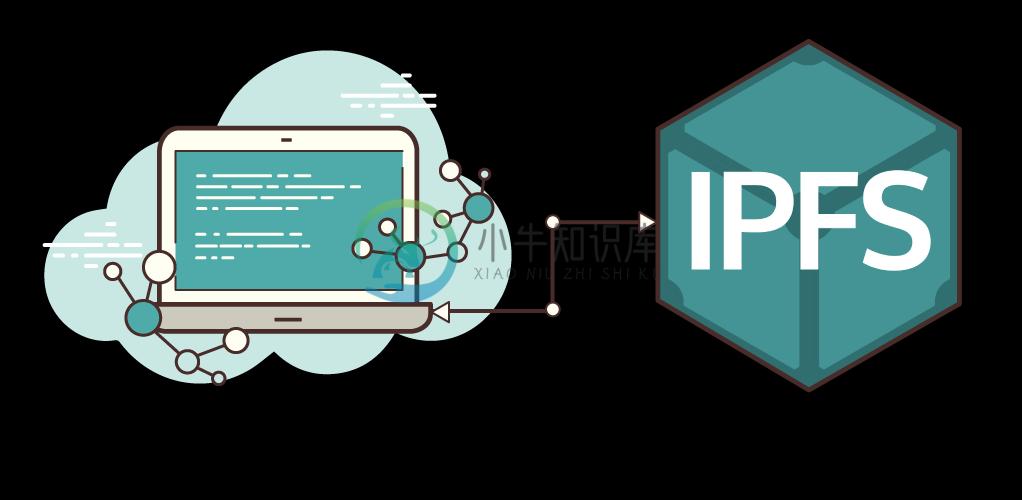
- Reading-list - Papers to read to understand IPFS
- Protocol Implementations
- HTTP Client Libraries
Filecoin
BigchainDB
BitShares
ArcBlock
Further Extension
Papers
Books
Blockchain guide by Baohua Yang, 2017 --Introduce blockchain related technologies, from theory to practice with bitcoin, ethereum and hyperledger.
Attack of the 50 Foot Blockchain: Bitcoin, Blockchain, Ethereum & Smart Contracts by David Gerard, London, 2017 --What is a bitcoin? ++The Bitcoin ideology ++The incredible promises of Bitcoin! ++Early Bitcoin: the rise to the first bubble ++How Bitcoin mining centralised ++Who is Satoshi Nakamoto? ++Spending bitcoins in 2017 ++Trading bitcoins in 2017: the second crypto bubble ++Altcoins ++Smart contracts, stupid humans ++Business bafflegab, but on the Blockchain ++Case study: Why you can’t put the music industry on a blockchain
Mastering Bitcoin - Programming the Open Blockchain 2nd Edition,by Andreas M. Antonopoulos, 2017 - FREE (Online Source Version) --What Is Bitcoin? ++How Bitcoin Works ++Bitcoin Core: The Reference Implementation ++Keys, Addresses ++Wallets ++Transactions ++Advanced Transactions and Scripting ++The Bitcoin Network ++The Blockchain ++Mining and Consensus ++Bitcoin Security ++Blockchain Applications
Programming Blockchains in Ruby from Scratch Step-by-Step Starting w/ Crypto Hashes... ( Beta / Rough Draft )by Gerald Bauer et al, 2018 - FREE (Online Version) --(Crypto) Hash ++(Crypto) Block ++(Crypto) Block with Proof-of-Work ++Blockchain! Blockchain! Blockchain! ++Blockchain Broken? ++Timestamping ++Mining, Mining, Mining - What's Your Hash Rate? ++Bitcoin, Bitcoin, Bitcoin ++(Crypto) Block with Transactions (Tx)
Programming Cryptocurrencies and Blockchains in Ruby ( Beta / Rough Draft )by Gerald Bauer et al, 2018 - FREE (Online Version) @ Yuki & Moto Press Bookshelf --Digital $$$ Alchemy - What's a Blockchain? -How-To Turn Digital Bits Into $$$ or €€€? •Decentralize Payments. Decentralize Transactions. Decentralize Blockchains. •The Proof of the Pudding is ... The Bitcoin (BTC) Blockchain(s)++Building Blockchains from Scratch -A Blockchain in Ruby in 20 Lines! A Blockchain is a Data Structure •What about Proof-of-Work? What about Consensus? •Find the Lucky Number - Nonce == Number Used Once++Adding Transactions -The World's Worst Database - Bitcoin Blockchain Mining •Tulips on the Blockchain! Adding Transactions++Blockchain Lite -Basic Blocks •Proof-of-Work Blocks •Transactions++Merkle Tree -Build Your Own Crypto Hash Trees; Grow Your Own Money on Trees •What's a Merkle Tree? •Transactions++Central Bank -Run Your Own Federated Central Bank Nodes on the Blockchain Peer-to-Peer over HTTP •Inside Mining - Printing Cryptos, Cryptos, Cryptos on the Blockchain++Awesome Crypto++Case Studies - Dutch Gulden • Shilling • CryptoKitties (and CryptoCopycats)
Blockchain for Dummies, IBM Limited Edition by Manav Gupta, 2017 - FREE (Digital Download w/ Email) --Grasping Blockchain Fundamentals ++Taking a Look at How Blockchain Works ++Propelling Business with Blockchains ++Blockchain in Action: Use Cases ++Hyperledger, a Linux Foundation Project ++Ten Steps to Your First Blockchain application
Get Rich Quick "Business Blockchain" Bible - The Secrets of Free Easy Money, 2018 - FREE --Step 1: Sell hot air. How? ++Step 2: Pump up your tokens. How? ++Step 3: Revolutionize the World. How?
Mastering Ethereum - Building Contract Services and Decentralized Apps on the Blockchain -by Andreas M. Antonopoulos, Gavin Wood, 2018 - FREE (Online Source Version)What is Ethereum ++Introduction ++Ethereum Clients ++Ethereum Testnets ++Keys and Addresses ++Wallets ++Transactions ++Contract Services ++Tokens ++Oracles ++Accounting & Gas ++EVM (Ethereum Virtual Machine) ++Consensus ++DevP2P (Peer-To-Peer) Protocol ++Dev Tools and Frameworks ++Decentralized Apps ++Ethereum Standards (EIPs/ERCs)
Building Decentralized Apps on the Ethereum Blockchain by Roberto Infante, 2018 - FREE chapter 1 --Understanding decentralized applications ++The Ethereum blockchain ++Building contract services in (JavaScript-like) Solidity ++Running contract services on the Ethereum blockchain ++Developing Ethereum Decentralized apps with Truffle ++Best design and security practice
Crypto Facts - Decentralize Payments - Efficient, Low Cost, Fair, Clean - True or False?, 2018 - FREE
IslandCoin White Paper - A Pen and Paper Cash System - How to Run a Blockchain on a Deserted Islandby Tal Kol --Motivation ++Consensus ++Transaction and Block Specification -Transaction format •Block format •Genesis block ++References
Blockchain in Action by Bina Ramamurthy, early access --Learn how blockchain differs from other distributed systems ++Smart contract development with Ethereum and the Solidity language ++Web UI for decentralized apps ++Identity, privacy and security techniques ++On-chain and off-chain data storage
Permissioned Blockchains in Action by Mansoor Ahmed-Rengers & Marta Piekarska-Geater, early access --A guide to creating innovative applications using blockchain technology ++Writing smart contracts and distributed applications using Solidity ++Configuring DLT networks ++Designing blockchain solutions for specific use cases ++Identity management in permissioned blockchains networks
Programming Hyperledger Fabric by Siddharth Jain, --A guide to developing blockchain applications for enterprise use cases ++Where Fabric fits in to the blockchain landscape ++The ins and outs of deploying real-world applications ++Developing smart contracts and client applications in Node ++Debugging and troubleshooting ++Securing production applications
Applications
Identity Applications
Public Blockchain Identity
- Blockstack - Platform for decentralized, server-less apps where users control their data. Identity included.
- Evernym - Self-Sovereign identity built on top of open source permissioned blockchain.
- Jolocom - Self-sovereing identity wallet.
- SIN - Proposed identity protocol for BitCoin.
- uPort - Self-Sovereign identity on Ethereum by ConsenSys.
Blockchain as a collateral
- ShoCard - Proprietary digital identity service, uses blockchain for time-stamping and secure documents exchange.
- Tradle - Makes a bank on blockchain, identity as a collateral.
Unclear
- KYC Chain - Secure platform for sharing verifiable identity claims, data or documents among financial institutions.
- ObjectChain Collab - Cross-industry collaboration over distributed identity.
- UniquID - Identity both for people and devices.
- Vida Identity - Enterprise-grade Blockchain Identity Software.
Guidance
- ID3 - Institute for Data Driven Design, explores issues around self-sovereign identity, and distributed organizations.
- OpenCreds - W3C Credentials Community Group.
- TAO Network Identity - Description of blockchain identity by Tao.Network.
Internet of Things Applications
- Chronicled - IoT devices registry on blockchain.
- Filament - Software and hardware for decentralized Intranet of Things systems
- IOTA - Decentralized Internet of Things token on blockless blockchain.
- Machinomy - Distributed platform for IoT micropayments.
- Project Oaken - IoT blockchain platform.
- Slock.it - Ethereum-based platform for building Shared Things.
Energy Applications
- bankymoon - Blockchain consultancy. Presented bitcoin-topped smart electricity meter. Once topped up, it chooses a plan, and starts moving energy.
- Co-Tricity - Decentralised energy marketplace by Innogy and ConsenSys.
- Electron - Reinventing energy on blockchain.
- GridSingularity - Blockchain for Smart Grid. Declare three years of work on the technology.
- lo3 energy - Energy Services, Product Research & Development. Makers of Brooklyn Microgrid along with ConsenSys.
- lumo - Energy provider. Experiment with blockchain.
- PowerLedger - Decentralised energy marketpace.
- PowerPeers - Peer-to-peer energy marketplace in the Netherlands.
- Solar Change - Makers of Solar Coin. AltCoin for a MW of solar power.
- Terraledger - Provider of Renewable Energy Certificates.
- ImpactPPA - Reinvesting of power generated under Power Purchase Agreement in more PPAs.
Media and Journalism
- Steem - Decentralized social network which incentivises content creation and curation.
- PopChest - Incentivized distributed video platform.
- Civil - Decentralized newsmaking platform.
DeFi (Decentralised Finance)
- Uniswap - Decentralized exchange powered by the Automated Market Maker model (AMM).
- Compound - Decentralized lending and borrowing.
- 1inch Exchange - Get the best rates among multiple DEXes.
- Synthetix - Protocol for synthetic assets.
- Tools
- Defi Dashboard: portfolio tracker, project lists, rankings, etc.
- Zapper: dashboard for viewing and managing your DeFi investments.
- Furucombo: easily create flashloans without writing a single line of code.
- Covalent: an unified API bringing visibility to billions of blockchain data points.
Contribute
Contributions welcome!
- Fork it (https://github.com/yjjnls/awesome-blockchain/fork)
- Clone it (
git clone https://github.com/yjjnls/awesome-blockchain) - Create your feature branch (
git checkout -b your_branch_name) - Commit your changes (
git commit -m 'Description of a commit') - Push to the branch (
git push origin your_branch_name) - Create a new Pull Request
If you found this resource helpful, give it a
-
Awesome Awesome Node.js A curated list of awesome lists that are about or related to Node.js. Inspired by the awesome list thing, going deeper down the rabbit hole. �� Meta stuff about this awesome li
-
Mining Digital Gold one Block at a Time?! • Don't Expect to Get Insanely Rich (Quick) • Tulips �� �� �� (like Blockchains) are Great and Gorgeous (and will Endure) b0 = Block.first( { from: "Du
-
Awesome Blockchain Articles A collection of awesome blockchain articles. Good learning resources about blockchain. 干货集合,入门区块链技术看这里就够了(可加Q群 680127749,备注说明加群来源,本文持续更新中...) 关注我的blog 入门科普 为了搞懂什么是区块链,我都快抑郁
-
Awesome Blockchain Rust Useful components for building blockchains in Rust. include: cryptography, distributed, p2p, consensus, etc Blockchains Blockchain Frameworks Cross-Chain Virtual Machines Gener
-
A curated list of awesome things related to Vite.js This awesome list is for Vite 2.x and onward. Vite 1.x's list is archived. Resources Official Resources 文档 GitHub Repo Release Notes Vue 3 Docs Awes
-
Awesome Python 是一个资源整理集合,由 vinta 发起和维护。内容包括:Web框架、网络爬虫、网络内容提取、模板引擎、数据库、数据可视化、图片处理、文本处理、自然语言处理、机器学习、日志、代码分析等。 这个系列没有推荐 Python 书籍、经典博文、交互教程,所以另外推荐:《25本免费的Python电子书》、《学习Python编程的11个(教程)资源》、《PythonMonk:Py


